Last week, I reported a host of indicators showing how Victoria has transformed into an economic wasteland.
These indicators included data from the Australian Securities & Investment Commission (ASIC) revealing that Victoria recorded the fewest businesses registered per 1,000 existing firms last financial year:
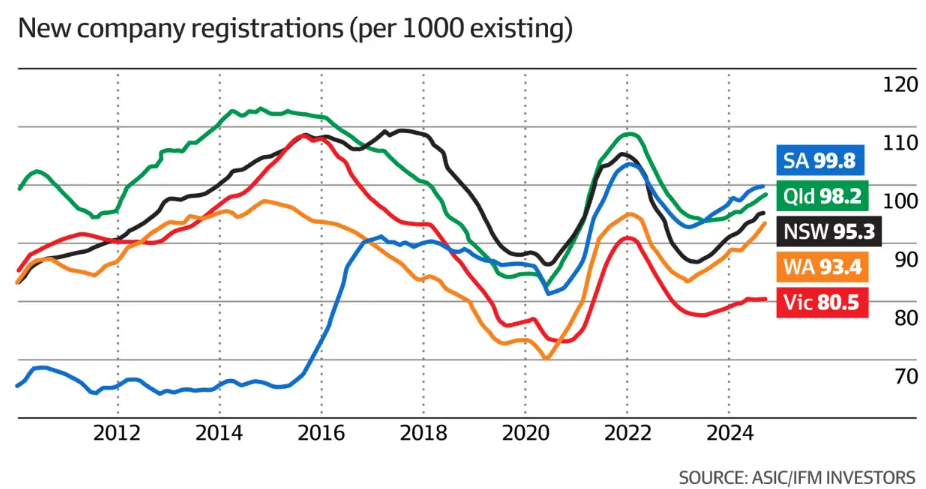
As shown above, Victoria registered only 80.5 new businesses per 1,000 existing firms, far below 99.8 in South Australia, 98.2 in Queensland, 95.3 in New South Wales, and 93.4 in Western Australia.
Melbourne’s CBD office vacancy rate has also increased to nearly 20% in the September quarter of 2024, well above the other capital cities, which recorded falling vacancy rates.

“Melbourne’s still a basket case”, commented Steve Urwin, the director of tenant advocacy firm Kernel Property.
“There is so little demand from tenants seeking 2000 square metres and above, so we’re not seeing where future demand is going to come from”.
Victoria’s productivity growth has also collapsed, tracking well below the rest of Australia since the Global Financial Crisis in 2008.
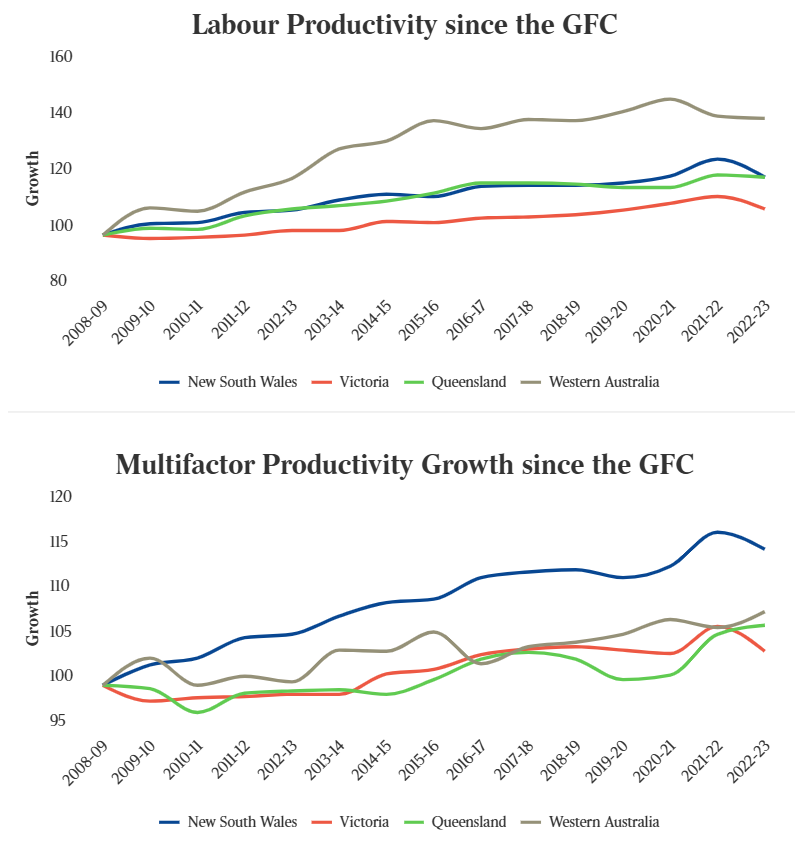
Meanwhile, Victoria is carrying the largest public debt load in Australia and has the lowest credit rating.
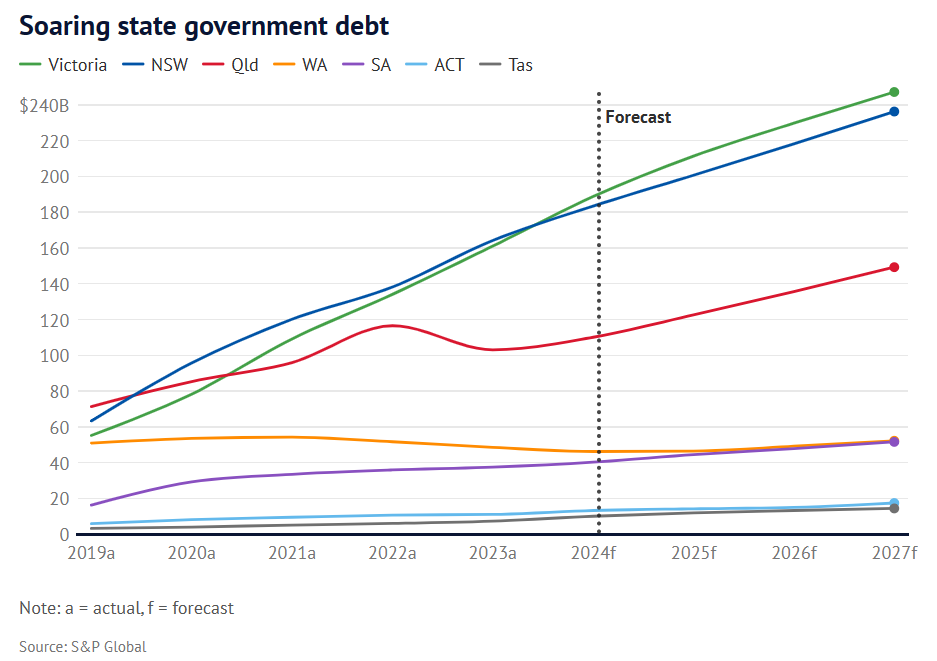
Per capita public debt in Victoria stood at $28,000 per person in 2023-24, 40% above than other major states.

Debt servicing costs have risen to over $1 billion each year.
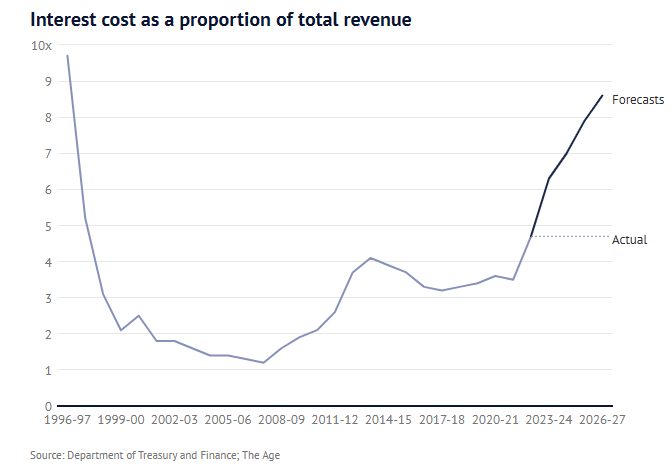
As a result, Victorians are paying the highest average tax rates in the nation:

The Victorian government has also been woeful at budget forecasting, repeatedly projecting surpluses but delivering large deficits:

In fact, the Victorian Treasury’s budget forecasts have proven wrong by $5 billion a year since 2014-15—an astonishing miss.
The Weekend AFR produced a report on Victoria’s economic demise, which included interviews with economists, business leaders, and politicians.
“Over the last 20 years, Victoria has gone from being one of the country’s richest states to being down there with South Australia and Tasmania, as one of its poorest”, independent economist Saul Eslake commented.
“You just need to take a walk around the City of Melbourne to see how far we have declined. Every lease sign and vacant shopfront is a story of heartache and despair for the business owner who used to have a shop there”, said independent mayoral candidate Arron Wood.
“More households need more work, but the population is growing too fast to support them”, said Alex Joiner, chief economist at IFM Investors.
The last point from Alex Joiner is especially pertinent. Victoria’s unemployment rate is the highest in the nation:
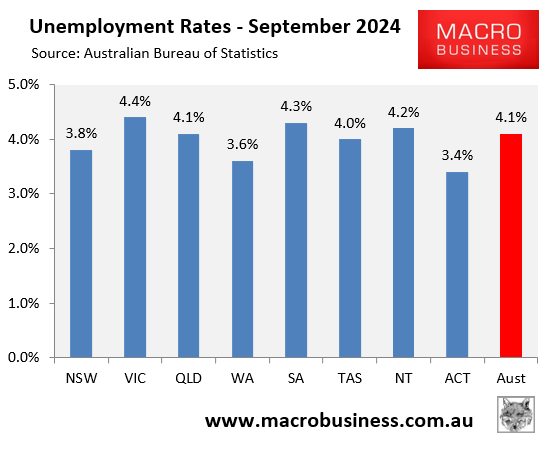
Victoria has also experienced the lowest wage growth in the nation:

The end result is that Victorian living standards are declining from the endless population crush, declining productivity growth, and ballooning state debt.

